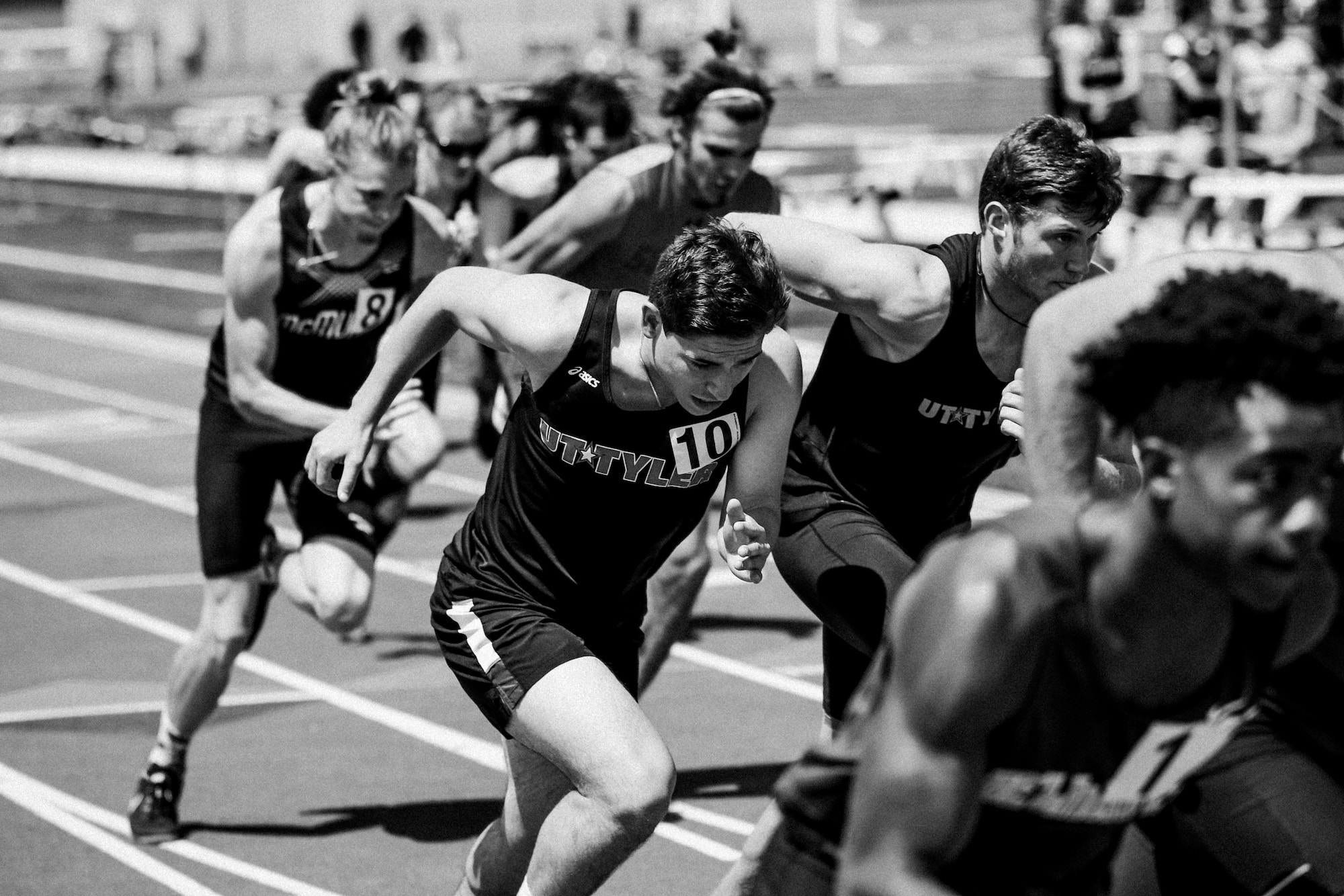Addiction in Athletes

Professional athletes are faced with bucket loads of pressure like the constant pressing of competition, regular training to maintain excellent form, fear of injuries, and even the fact that they’re always in the spotlight. These and the demands of everyday life create an intense amount of pressure for athletes.
This is one of the reasons many athletes turn to drugs and alcohol, however, there are so many other reasons. Some athletes are genetically prone to addiction while some have an already existing substance use disorder.
Many athletes only started abusing drugs and alcohol after entry into professional sports; some carry a false sense of immunity to the addictive effects of alcohol and drug abuse, but a lot of players who think this way eventually succumb to addiction.
Athletes have lost their careers and even their lives to addiction. We can use Tyler Skaggs as a case study. A pitcher for the Angels who recently overdosed from his addictions. He was addicted to fentanyl, oxycodone, and alcohol. Medical examiners declared the cause of his death to be mixed ethanol and an overdose of opioids.
The Link Between Athletes and Substance Abuse
There is a connection between athletes and addiction and its due to the unique demands of a sports career. Fortunately, there are effective pathways to recovery for those who have already lost control.
Here are some major reasons athletes abuse substances:
-
-
-
Genetic predisposition or family history:
An athlete can be at risk of substance abuse if he/she has a personal or family history of such. Earlier losses in life, a history of addiction, whether personal or family combined with other factors such as stresses of professional sports can push athletes into substance use disorder.
-
Enhanced performance:
A lot of professional athletes are under pressure to do better than their peers and even to better their own previous performances. Many athletes turn to performance-enhancing drugs to boost their performances.
-
Accessibility:
The popularity and wealth that comes with professional sports provide athletes with easy and fast access to drugs. Sports can be so financially rewarding that even college athletes can afford a variety of drugs.
-
Depression:
This and other mental health problems can push athletes into the abuse of drugs and addictive substances as they try to self-medicate.
-
Injuries:
Athletes take drugs to speed up recovery after an injury but unfortunately, this can lead to addiction quickly.
-
Stress:
Some athletes take drugs to relieve emotional and mental stress that comes from a life on and off the field, ring, court, or track and even life after retirement. This raises the risk of being addicted to drugs.
Types of Drugs Athletes are Addicted to and Consequences
Anabolic Steroids
Anabolic steroids are especially used by bodybuilders to reduce body weight, cut down fats and at the same time increase muscle mass. It also increases levels of aggression.
The drugs work this way because they are derived from testosterone, the male hormone that produces the sexual characteristics in men. Anabolic steroids have legal medical uses but they are not meant to be used in sports.
This unethical use of anabolic steroids to improve performance and be ahead of peers can cause painful and distressing withdrawal symptoms. These symptoms are worse if the use of these drugs is unregulated and an athlete suddenly tries to discontinue regular use.
Athletes who withdraw from steroids experience mood swings, cravings for more steroids, insomnia, fatigue, and a strong desire to continue taking the drugs even when they know the consequences are mounting.
Male athletes who use anabolic steroids might also suffer erectile dysfunction and even develop small testicles and enlarged breasts because this drug manipulates the production of testosterone in the body.
Female athletes who take anabolic steroids will develop body hair and deeper voice and they might start having irregular periods. It can also cause low levels of estrogen and this can make their breasts shrink.
A characteristic of addiction is when they continue taking these drugs despite the psychological and physical damage it’s causing, they are unable to stop because the body reacts violently when the drugs are discontinued.
Adderall
Amphetamine and dextroamphetamine are consumed by a large number of athletes. The main reason they take it is to excite their central nervous system, and this, in turn, leads to higher levels of energy, increased mental alertness, aggression, and low fatigue.
Adderall is used in treating ADHD and narcolepsy but it can also be abused because it increases mental focus and awareness, traits every athlete would need to succeed in sports.
It makes the user feel unbelievably good and gives a burst of superhuman pleasure that hijacks the reward system of the brain and rewrites the neural pathways to make the user want more pleasure.
The side effects of Adderall and other stimulants like cocaine and methamphetamine are sleep disorders, anxiety, and several mood swings that are unpredictable.
When you stop using these drugs, you will experience withdrawal symptoms such as muscle cramps, nausea, vomiting, and psychological problems like depression. Some athletes have depression to the point of considering suicide, this compels them to consume more Adderall.
Narcotics
Narcotics are taken by athletes to help them cope with the physical pains that come along with their profession. These drugs are so strong and powerful that they artificially numb the pain of athletes instead of allowing their bodies to recover; they are also addictive.
Heroin
Painkillers increase drug addiction, but this advice isn’t usually heeded as many athletes are under pressure to play through pain. Painkillers like heroin have similar effects on the brain as stimulants and many athletes become addicted to these as they try to use narcotics for long-term management of pain.
These drugs are dangerously addictive and they have ruined many lives and careers, especially so for athletes, considering the purchasing power of professional sportspeople.
Athletes Who Lost Their Lives Due to Substance Abuse Disorder
There are a lot of professional athletes whose lives have been cut short due to substance abuse Below are some of their names and the exact addiction/s they suffered from:
- Eugene Lipscomb, age 31, football, Heroin
- David Croudip, age 30, cocaine
- Derek Boogaard, age 28, hockey, prescription drugs and alcohol
- Andy Irons, age 23, surfing, prescription drugs
- Don Rogers, age 23, football, cocaine
- Len Bias, age 22, basketball, cocaine
- Michael Carl Baze, age 24, horse racing, prescription drugs and cocaine
- Erica Blasberg, age 25, golf, prescription drugs
- Edward Fatu (Umaga), age 36, professional wrestling, prescription drugs
- Christopher Bowman, age 40, figure skating, cocaine, marijuana, alcohol, and prescription drugs
- George Best, age 59, soccer, alcohol
- Scott Charles, 45, professional wrestling, prescription drugs and cocaine
- Darrel Porter, age 50, baseball, cocaine
- Chris Mainwaring, age 41, Australian rules football, cocaine
- Christopher Wiley Antley, age 34, horse racing, prescription drugs
- David Waymer, age 34, American football, cocaine
- Paul Hayward, age 38, rugby, heroin
- Peter Jackson, age 33, rugby, heroin
Below is a list of some athletes who sought help and were able to overcome their addiction:
- Ryan leaf, football, prescription drug and alcohol
- John Daly, Golf, alcohol
- Diego Maradona, soccer, cocaine
- Darryl Strawberry, baseball, alcohol and cocaine
- Michael Phelps, swimming, alcohol
- Andre Agassi, Tennis, crystal meth
- Cris Carter, American football, ecstasy, marijuana, crack cocaine, and alcohol
- Jason Williams, basketball, prescription drugs
- Gareth Hock, rugby, cocaine and ecstasy
- Chris Harren, basketball, heroin and prescription drugs
Unfortunately, some current and former athletes have confessed to continued struggle with addiction, some of them are Oscar De La Hoya (cocaine and alcohol), Mike Tyson (marijuana, cocaine, and alcohol), and Johnny Manziel (alcohol).
The Tyler Skaggs story
Tyler Skaggs’ autopsy revealed that alcohol, oxycodone, and fentanyl led to his death by choking on his vomit.
The 27 years old was the Los Angeles Angels’ starting pitcher. The toxicology report released stated that he had these substances in his body when he was found dead in his hotel room in Texas on July 1st.
His death was as a result of a terrible mixture of “oxycodone, fentanyl, and alcohol intoxication with terminal aspiration of gastric contents”. This means he choked on his vomit while under the influence of these substances.
He was found on his bed fully coated without signs of trauma and his death was reported as an accident.
Fentanyl is a strong synthetic opioid and it is similar to morphine. When it is taken in uncontrolled amounts or taken by users whose tolerance to opioids has not been increased by long-term use, it is likely to subdue respiration and can kill fast.
Skaggs was one of the popular players in his club and his death rocked the baseball world.
Addiction Recovery Options for Athletes
Athletes who are substance abusers might view asking for help as a weakness, especially when they have a competitive streak. Such athletes need a change in their thinking because substance addiction is a serious health problem.
In order to beat this, athletes need to realize that addiction is a game that can’t be won by themselves. This is the first and most important step towards recovery.
-
-




